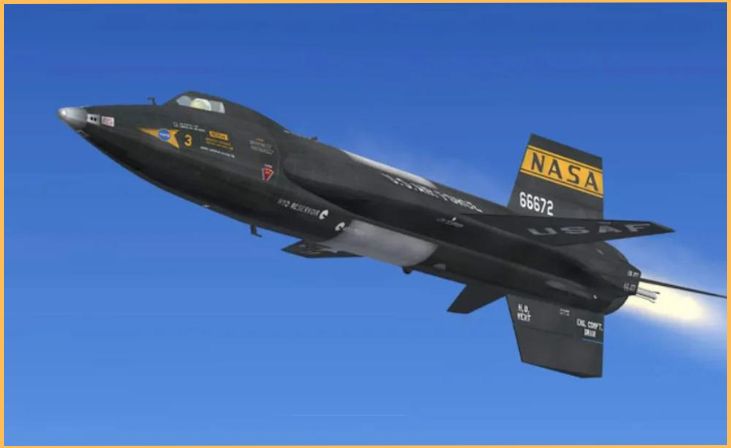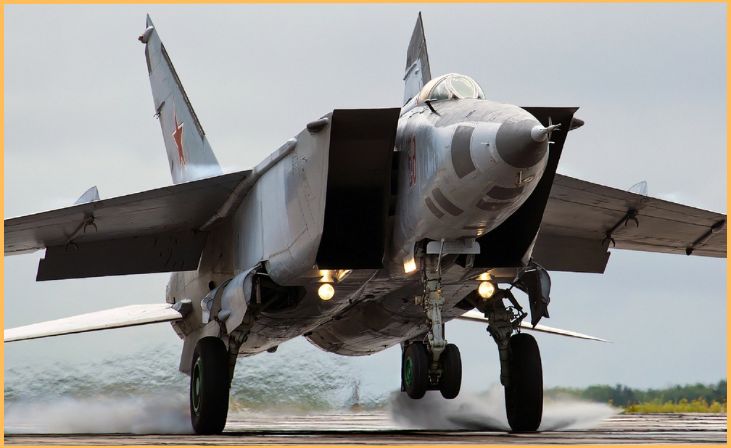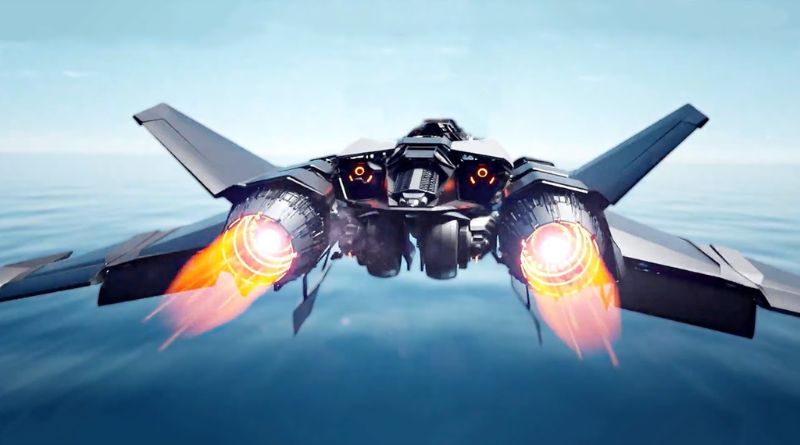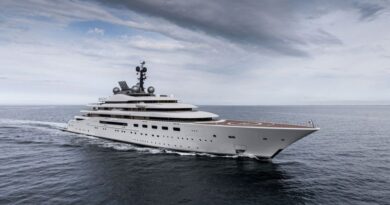Embark on a thrilling journey through the skies as we explore the pinnacle of aeronautical engineering with “The 10 Fastest Military Jets in the World.” From cutting-edge technology to mind-boggling speeds, this list showcases the elite aircraft that dominate the heavens. Witness the sheer power and velocity of these marvels of aviation as they push the boundaries of what’s possible.
From iconic names like the Lockheed Martin SR-71 Blackbird, known for its incredible speed and reconnaissance capabilities, to the modern marvels like the North American X-15, which holds the record as the fastest manned aircraft ever flown, each jet on this list is a testament to the relentless pursuit of speed and agility in military aviation.
Fastest Military Jets
North American X-15

The North American X-15 stands as an iconic and groundbreaking aircraft in the history of aviation. Developed jointly by NASA and the U.S. Air Force, the X-15 was not just an aircraft; it was a pioneering platform that pushed the boundaries of aeronautical engineering. Launched from a B-52 bomber at high altitude, the X-15 was designed for high-speed flight and experimental research. One of the most remarkable features of the X-15 was its ability to achieve hypersonic speeds.
On October 3, 1967, with William J. “Pete” Knight at the controls, the X-15 set the world record for the fastest speed ever recorded by a manned, powered aircraft. It reached an astonishing speed of Mach 6.72, which translates to around 4,520 miles per hour (7,274 kilometers per hour). This record still stands today.
Read Also: 10 Iconic Aircraft That Have Stood the Test of Time
Lockheed SR-71 Blackbird
The Lockheed SR-71 Blackbird, an aerospace marvel, epitomizes speed and stealth. Developed in the 1960s, this reconnaissance aircraft holds the title of the fastest plane ever built. With a top speed exceeding Mach 3 (2,200 mph), the Blackbird could traverse continents in mere hours. Its sleek, black design not only contributed to its iconic appearance but also helped dissipate the intense heat generated at high speeds. Operating at altitudes surpassing 85,000 feet, the SR-71 could outfly and outmaneuver adversaries, making it an essential asset during the Cold War. Despite its retirement in the late 1990s, the SR-71 Blackbird remains a testament to aerospace engineering excellence and a symbol of unmatched speed and precision.
Lockheed YF-12
The Lockheed YF-12, a prototype interceptor, emerged as a high-speed pioneer during the Cold War era. Developed from the A-12 reconnaissance aircraft, the YF-12 showcased advanced technologies that influenced future aerospace designs. With a top speed exceeding Mach 3, it boasted extraordinary performance capabilities. Originally designed for intercepting high-speed bombers, the YF-12 underwent testing in the 1960s. Although it never entered full production, its legacy lives on in the development of subsequent high-speed, high-altitude aircraft. The YF-12’s contribution to aviation history underscores its role as a precursor to advanced interceptor and reconnaissance platforms, leaving an indelible mark on the evolution of aerial technology.
MiG-25 Foxbat

Hailing from behind the Iron Curtain, the MiG-25 Foxbat, a Soviet marvel, soared as a formidable interceptor during the Cold War era. Renowned for its capability to reach speeds of approximately Mach 3.2, the Foxbat symbolized the technological prowess of the Soviet Union. Operational in the 1960s, this high-speed interceptor was designed to counter perceived threats from advanced Western reconnaissance aircraft. Its immense speed and altitude capabilities marked it as a critical component of Soviet air defense. The MiG-25’s distinctive appearance and its role as a strategic countermeasure made it a symbol of Soviet aeronautical achievement and a constant presence in the geopolitical landscape of the Cold War.
North American XB-70 Valkyrie
In 1964, the XB-70 Valkyrie, a groundbreaking prototype strategic bomber, graced the skies, showcasing its remarkable capability to reach speeds of Mach 3. A testament to the technological ambitions of its time, the Valkyrie’s sleek and futuristic design was a sight to behold. Though its operational life was brief, its legacy endures as an exemplar of high-speed aviation innovation. Designed for sustained high-speed flight at extremely high altitudes, the XB-70 pushed the boundaries of aeronautical engineering. Despite never entering full production, the Valkyrie’s influence reverberates through the aerospace industry, offering invaluable insights into the challenges and possibilities of achieving unprecedented speeds in the realm of strategic bombers.
Lockheed Martin F-22 Raptor
In the contemporary era, the F-22 Raptor assumes a starring role as a fifth-generation fighter jet, embodying the epitome of modern aviation technology. Unveiled with advanced capabilities, this formidable aircraft boasts speeds surpassing Mach 2. Designed to dominate the skies, the F-22 integrates stealth, maneuverability, and cutting-edge avionics. Its supercruise ability enables sustained supersonic flight without afterburners, a feature contributing to its unparalleled speed. As a multirole fighter, the F-22 excels in air superiority missions, electronic warfare, and ground attack. Its streamlined design and state-of-the-art systems underscore the evolution of air combat capabilities, solidifying the F-22 Raptor’s status as a symbol of contemporary aerial dominance and a testament to the ongoing advancements in military aviation.
Lockheed Martin F-35 Lightning II

Introducing the F-35 Lightning II, a cutting-edge multi-role fighter meticulously engineered for stealth and versatility. Boasting a top speed of approximately Mach 1.6, the F-35 seamlessly merges speed with adaptability, making it a paramount asset in the landscape of modern warfare. Designed to excel in various roles, including air-to-air combat, ground attack, and reconnaissance, the F-35’s versatility is matched only by its advanced stealth features. Its ability to operate in contested environments, coupled with state-of-the-art avionics, enhances its strategic value. As a key player in international defense, the F-35 Lightning II exemplifies the fusion of speed and adaptability, setting a new standard for multi-role fighters and underscoring the evolving demands of contemporary military operations.
Sukhoi Su-57
Emerging from the expansive skies of Russia, the Su-57 takes center stage as a fifth-generation fighter, pushing the boundaries of military aviation. With speeds surpassing Mach 2, this advanced aircraft seamlessly integrates stealth technology and cutting-edge avionics. Representing the pinnacle of Russian military aviation, the Su-57 is designed for air superiority and versatility in various combat scenarios. Its sleek and agile profile, coupled with advanced systems, enhances its survivability and lethality. As a flagship of Russian innovation, the Su-57 underscores the nation’s commitment to staying at the forefront of military technology. The marriage of speed, stealth, and advanced capabilities positions the Su-57 as a formidable force in the ever-evolving landscape of global military aviation.
Eurofighter Typhoon

Born out of collaborative efforts among European nations, the Eurofighter Typhoon emerges as a versatile multi-role fighter, showcasing a remarkable top speed of Mach 2. Operated by multiple air forces, it stands as a symbol of successful international cooperation in aerospace technology. The Eurofighter Typhoon’s agility, advanced avionics, and adaptability make it a prominent player in modern air forces. With a design that emphasizes both air-to-air and air-to-ground capabilities, the Typhoon reflects the shared commitment of European nations to technological excellence and collective defense. Its widespread adoption underscores the success of a collaborative approach, exemplifying how joint ventures in aerospace can yield a high-performance aircraft that meets the diverse operational needs of nations participating in this transnational endeavor.
Read Also: 7 Legendary Sports Cars That Redefined Speed And Power
Dassault Rafale
Culminating our list is the Dassault Rafale, a distinguished French fighter jet renowned for its exceptional agility and versatility. Boasting a top speed of around Mach 1.8, the Rafale is a testament to French aeronautical mastery. Designed to excel in various roles, including air-to-air combat, ground attack, and reconnaissance, its versatility is matched only by its advanced avionics and sophisticated weaponry. The Rafale’s sleek design and cutting-edge technology reflect the culmination of decades of French expertise in military aviation. A symbol of national pride, the Rafale underscores France’s commitment to innovation, showcasing the nation’s ability to produce a high-performance aircraft that meets the demands of contemporary air combat scenarios with precision and finesse.
Bottom Line
In conclusion, “The 10 Fastest Military Jets in the World” offers a captivating glimpse into the zenith of aviation technology, where speed meets precision in the realm of military aircraft. From legendary classics like the SR-71 Blackbird to the state-of-the-art marvels such as the Sukhoi Su-57, this exploration has showcased the relentless pursuit of speed, agility, and technological prowess in the world of military aviation.
As these jets soar through the skies, breaking barriers and setting records, they stand not only as symbols of engineering excellence but also as powerful assets in the defense of nations. The evolution of supersonic and hypersonic capabilities continues to shape the future of aerial warfare, leaving us in awe of the incredible feats achieved by these airborne behemoths.
FAQs
The North American X-15 holds the record for the fastest speed ever achieved by a manned aircraft, reaching a speed of Mach 6.72 (4,520 miles per hour) during a test flight.
Fast military jets play a crucial role in modern warfare by providing rapid response, reconnaissance capabilities, and air superiority. Their speed and agility contribute to strategic advantage and quick deployment in various combat scenarios.
Technological advancements, including more efficient engines, aerodynamic designs, and lightweight materials, contribute to the increased speed of military jets. These innovations enhance overall performance and fuel efficiency.






